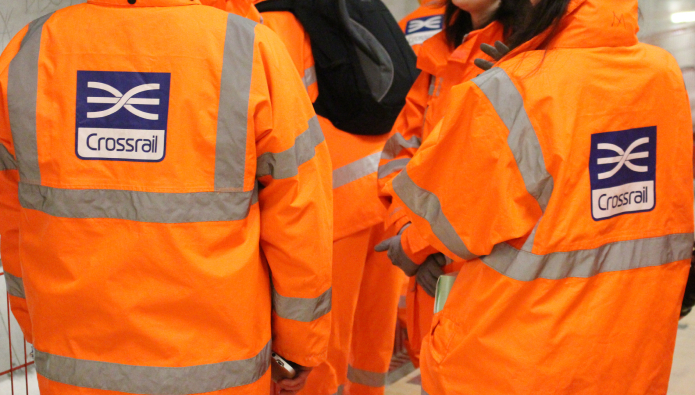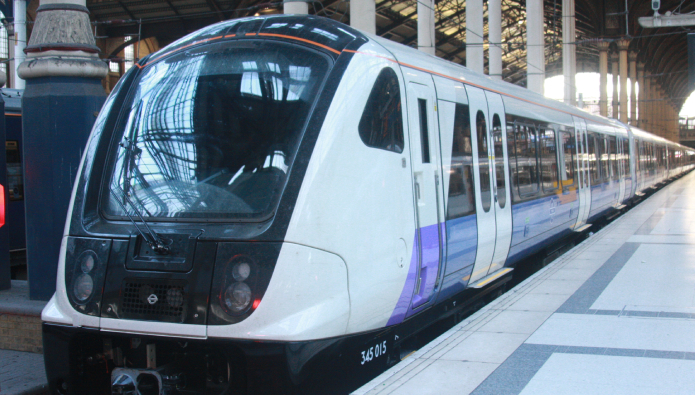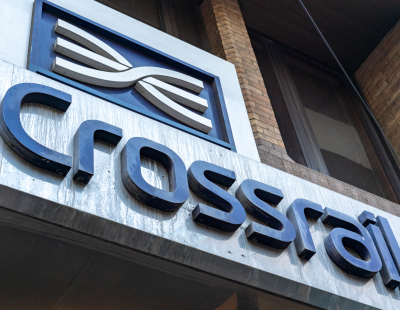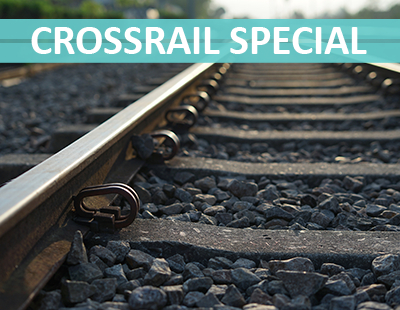Here, with the help of housebuilder Barratt London, PIT takes a closer look.
High capital growth
Western Circus in Acton, which is close to the proposed Old Oak Common station in North West London, the only station in the UK to connect with both Crossrail and HS2, is set to see 11% capital growth in the next five years, according to Barratt London. Prices at the development begin from £479,000.
“The opportunity for capital growth here is phenomenal. Acton is significantly more affordable than neighbouring Chiswick and Ealing, but over the next decade is set to emerge as a hotspot to rival White City, particularly with the promised arrival of Crossrail,” Ed McCoy, sales director at Barratt West London, said.
He added: “Acton is arguably the most accessible place in West London, but despite the extraordinary connectivity of this area, housing options have historically been limited. Western Circus aims to help realign this imbalance.”

Another regeneration scheme on the Crossrail route – which is officially known as the Elizabeth Line – is Greenview Court by developer Strawberry Star.
It sits just five minutes from Southall station (on the Great Western main line), which is being upgraded to prepare for the start of Crossrail services passing through it. This includes a redeveloped station entrance and façade, while a ‘new, bright, spacious’ ticket hall will provide a more welcoming environment for passengers and a new forecourt will aim to cut congestion at the entrance to the station.
The scheme, which is 13 minutes direct from eight rail and underground lines in zone 1, is part of Southall’s £7.7million regeneration plans, which includes retail and community infrastructure as well as housing projects.
One of Barratt London’s biggest projects, and one of the largest regeneration projects along the Crossrail line, is Hayes Village in the West London town of Hayes – which for many years has been in need of significant regeneration.
Hayes & Harlington station is set to benefit from major improvements in preparation for the new Elizabeth Line services, including a redeveloped station and fleet of new trains.
From the scheme, Heathrow will be reached in five minutes and Bond Street in 20 minutes via Crossrail. Barratt argues, though, that it has zone 2 transport times with the price of zone 5.
Crossrail is expected to increase property values in the area by up to 25% compared to the London average, with particularly high rental demand thanks to the Village being located close to large businesses including GSK, Sky and Apple. The former site of the Nestlé factory is being converted into more than 1,500 homes, with prices also beginning from £479,000.
In East London, meanwhile, there is New Market Place in East Ham, a district of the London Borough of Newham. The borough will be home to five new Crossrail stations, including Stratford, Maryland, Manor Park and Forest Gate, with journey times of 19 minutes to Bond Street, 12 minutes to Canary Wharf, and 17 minutes to the City. This stretch of the line is effectively already running under the branding of TfL Rail.
Barratt says property prices in the borough are increasing at 39% compared to 22% across London. Homes at New Market Place start at a more affordable £308,000.
Lastly, there’s High Street Quarter in Hounslow, a ten-minute walk from Hounslow train station with its direct trains to London Waterloo. The ‘Golden Link’ railway line will connect Hounslow with Crossrail and HS2.
From the scheme, Heathrow Airport is only ten minutes by tube, while it’s a five-minute walk to Hounslow Central & Hounslow East underground stations on the Piccadilly line. Over the next five years, 8% average capital growth is forecast for the homes which start from £354,000.
As well as aiming homes at first-time buyers, Barratt London is also increasingly targeting property investors with the promise of healthy returns and strong capital growth, particularly in Crossrail hotspots.
A torturous process
Getting the Crossrail line fully operational has been highly problematic, to put it lightly. Throughout its relatively short lifespan, it has been beset by issues, controversy and budget overruns.
To show how long it has been under construction, the project was actually approved by the-then Labour government in 2008 and started in September 2009. Both the major parties made commitments to deliver Crossrail in their 2010 manifestos, and the project has been continued by the Tory-led governments of the last 11 years.
As one of Europe’s biggest infrastructure projects, it was always going to face opposition and challenges, but it is well behind its original planned opening date of December 2018, which was delayed to allow for more testing and the completion of flagship stations such as Bond Street. In April 2019, a new opening window of between October 2020 and March 2021 was announced.
But this was soon pushed back again when, in November 2019, Crossrail’s chief executive Mark Wild admitted the line wouldn’t be opening in 2020 and would need between £400 million and £650 million to be completed.
Wild also revealed that the cost of the project – which will eventually connect major landmarks such as Paddington, Liverpool Street, Canary Wharf and Heathrow Airport in a much quicker way than before - could reach £18.25 billion, more than £2 billion over the original budget.
In January 2020, TfL commissioner Mike Brown said his organisation was planning for Crossrail – a joint project between TfL and National Rail - to complete in the final quarter of 2021.
Brown said at the time: “We’ve looked at a delay until the later stages of 2021, in terms of our business planning assumption. The assumption we’ve made is, I suppose, at the pessimistic end. But it’s the pragmatic end.” It was said that the delays would cost TfL over £1.3 billion in lost revenue.
More recent official statements have suggested the opening of the Elizabeth line will be further delayed to summer 2021, with full services across the route coming in mid-2022.
According to a statement from Crossrail’s press office, ‘intensive operational testing of the train and signalling systems, known as Trial Running’, was scheduled to start at the end of the first quarter this year (end of March 2021).
“That’s for the central section of the line between Paddington and Abbey Wood,” the statement said. “We already have Elizabeth line trains running on the east and west of the line under the TfL Rail service (but no through service).”
It added: “The central section of the Elizabeth line is due to commence passenger service in the first half of 2022. Once the central section is open, through services will be introduced in the months after for passengers travelling from Shenfield in the east and Reading and Heathrow in the west.”

Like everything else, construction of the line has been affected by the Covid-19 pandemic, with works paused at times and resuming with fewer construction workers allowed on-site.
Once finally complete, the Elizabeth Line is set to carry some 200 million passengers per year and increase rail capacity in Central London by 10%. There will have been 10 new stations built at Paddington, Bond Street, Tottenham Court Road, Farringdon, Liverpool Street, Whitechapel, Canary Wharf, Custom House, Woolwich and Abbey Wood, and trains every two and a half minutes at peak times through central London.
State-of-the-art trains will be 200 metres long, accommodating up to 1,500 passengers, while Crossrail insists there will be a long-term £42 billion benefit to the UK economy and better links between the capital’s major commercial and business districts.
During the construction of the new railways, Crossrail Ltd says 55,000 full-time jobs and 75,000 business opportunities will have been created.
In spite of the numerous setbacks Crossrail has suffered, which have been embarrassing for City Hall, TfL, the government and Crossrail Ltd, there is no suggestion that the ‘Crossrail effect’ is weakening as the line gets ever closer to full operation.
Whether all the money, trouble, disruption and uncertainty will have been worth it – especially in a new era where commuting is likely to be much less important – is much more open for debate and won’t become clear for a few years after the line finally starts functioning.








/ElizabethLine2-400x310.jpg)
/CrossrailTrain-400x310.png)

.png)










Join the conversation
Be the first to comment (please use the comment box below)
Please login to comment